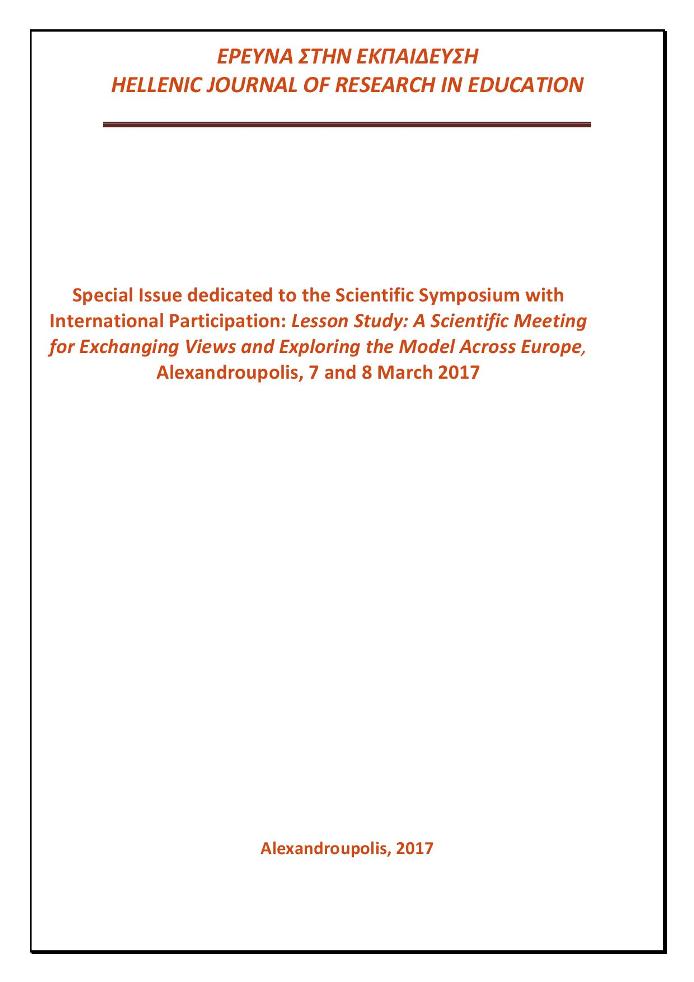Ruptures and continuities between kindergarten and the first years of primary school
Περίληψη
The aim of this article is to present the results of a lesson study which describes and analyzes the issues of transition between the kindergarten and the first grade of primary school. The lesson study was conducted with three groups of 10 teachers who teach the first four grades of elementary education, namely the kindergarten and first as well as the second year of primary school. Consequently, each team chose an item from the basic principles of subject-based teaching and learning applicable to the first four years of schooling. Each lesson was implemented in a kindergarten as well as in a primary classroom setting and observed by group members. Results from observations show individual rather than collective differences in teaching styles and practices of kindergarten and primary teachers in different levels. However, these differences are not clearly visible as they should be. Consequently, we’ll argue that it is possible to bridge what these teachers believe as a “necessary rift” in their teacher styles and practices through mentoring.
Λεπτομέρειες άρθρου
- Πώς να δημιουργήσετε Αναφορές
-
Clerc-Georgy, A., & Kappeler, G. (2017). Ruptures and continuities between kindergarten and the first years of primary school. Έρευνα στην Εκπαίδευση, 6(2), 1–10. https://doi.org/10.12681/hjre.14844
- Ενότητα
- Άρθρα

Αυτή η εργασία είναι αδειοδοτημένη υπό το CC Αναφορά Δημιουργού – Μη Εμπορική Χρήση – Παρόμοια Διανομή 4.0.
Τα πνευματικά δικαιώματα των άρθρων του περιοδικού ανήκουν στους συγγραφείς. Τα άρθρα διατίθενται με άδειες Creative Commons CC-BC-SA 4.0



